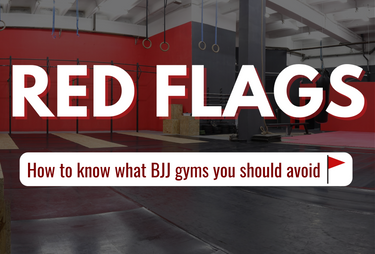
As a seasoned Jiu-Jitsu practitioner, I've seen my fair share of gyms, both good and bad. Choosing the right Jiu-Jitsu school is crucial for your development and overall experience. To help you avoid potential pitfalls, I've compiled a list of 15 red flags to watch out for.
1. Unverified Instructor Credentials
A legitimate Jiu-Jitsu instructor should have verifiable credentials, such as a black belt rank from a reputable organization. Be wary of gyms with instructors who cannot provide proof of their qualifications.
2. Lack of Cleanliness
A clean and hygienic training environment is essential for preventing the spread of infections and maintaining a positive atmosphere. Look out for gyms with dirty mats, untidy locker rooms, or a general disregard for cleanliness.
3. High-Pressure Sales Tactics
A reputable Jiu-Jitsu gym should prioritize the quality of training over sales. Be cautious of gyms that use high-pressure tactics to sell memberships or additional services.
4. Disregard for Safety
Safety should be a top priority in any Jiu-Jitsu gym. Look for gyms that have clear safety protocols in place, such as proper supervision, injury prevention techniques, and a focus on controlled sparring.
5. Negative Gym Culture
A positive and supportive gym culture is essential for personal development and enjoyment. Avoid gyms with signs of bullying, cliques, or discrimination.
6. Inconsistent or Non-Existent Curriculum
A structured curriculum is crucial for systematic learning and progression. Be wary of gyms that lack a clear teaching plan or do not provide consistent instruction.
7. Ignoring Student Progress
Good instructors should take the time to acknowledge and support individual student progress. If you feel like your progress is being overlooked, it may be time to consider a different gym.
8. Limited Practical Application
Regular sparring sessions and practical application of techniques are essential for developing your Jiu-Jitsu skills. Avoid gyms that prioritize theory over practical training.
9. Overcrowded Classes
Overcrowded classes can lead to limited individual attention and increased risk of injury. Look for gyms that offer classes with manageable class sizes.
10. Lack of Open Communication
Open communication between instructors and students is crucial for a positive learning experience. Be wary of gyms where instructors are unresponsive to your questions or concerns.
11. Inadequate Facilities
Proper training facilities, including adequate mat space, clean restrooms, and functional equipment, are necessary for a safe and enjoyable training environment.
12. Short-Term Black Belts
Be cautious of gyms that promise quick promotions or black belts within unrealistic time frames. True mastery of Jiu-Jitsu takes time and dedication.
13. Lack of Competition Participation
Participation in competitions can be an essential part of a grappler's development. Avoid gyms that discourage or do not support competition.
14. Inflexible Class Schedules
A good Jiu-Jitsu gym should offer flexible class schedules to accommodate the needs of its students. Avoid gyms with rigid schedules that may be difficult to fit into your busy life.
15. No Trial Classes or Transparency
Reputable gyms will offer trial classes to allow potential students to experience the training environment before committing. Be wary of gyms that are hesitant to provide this opportunity.
By being aware of these red flags, you can make an informed decision and find a Jiu-Jitsu gym that aligns with your goals and values. Remember, a positive and supportive training environment is essential for your growth and enjoyment of the martial art.
Additional Tips
- Visit Multiple Gyms: Don't just settle for the first gym you find. Visit several gyms in your area to compare their facilities, instructors, and overall atmosphere.
- Talk to Current Students: Ask current students about their experiences at the gym. They can provide valuable insights into the gym's culture, instructors, and training quality.
- Trust Your Instincts: Ultimately, the best way to choose a Jiu-Jitsu gym is to trust your gut feeling. If something doesn't feel right, it probably isn't.
Conclusion
Choosing the right Jiu-Jitsu gym is an important decision that can significantly impact your training experience. By being aware of the red flags outlined in this article, you can avoid potential pitfalls and find a gym that is the perfect fit for you. Remember, a positive and supportive training environment is essential for your growth and enjoyment of the martial art.





